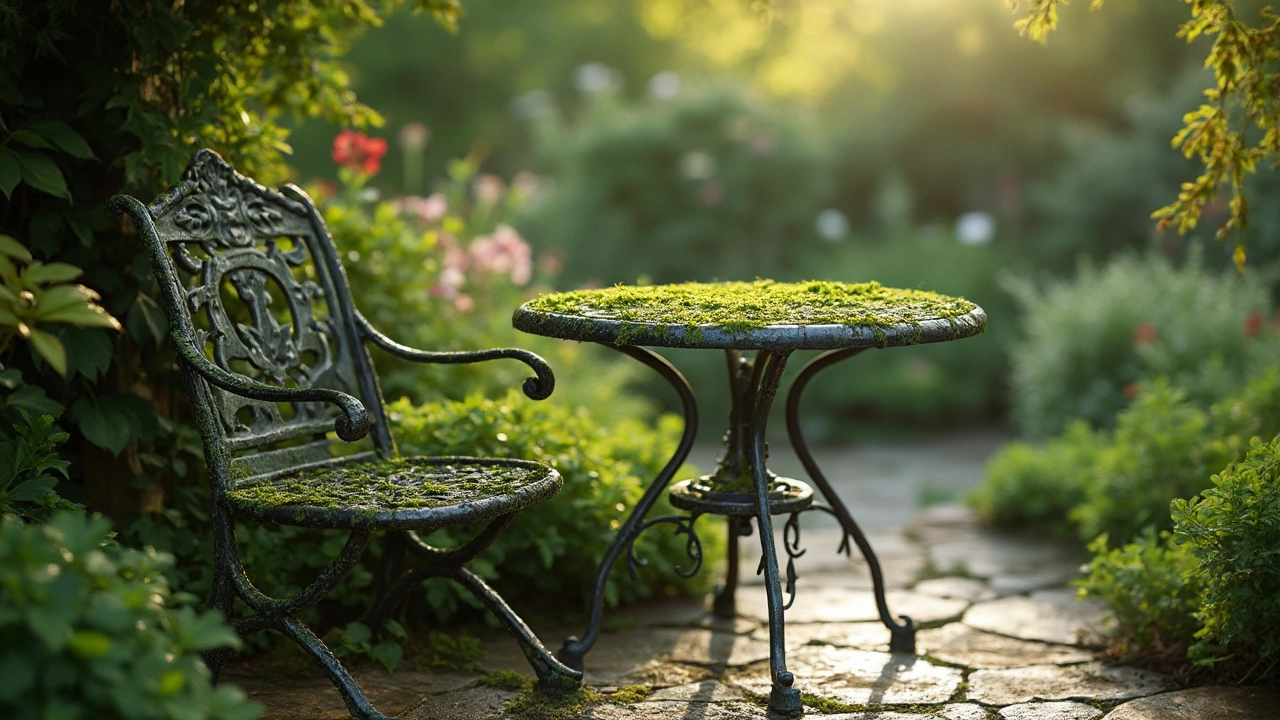Noticed a weird green layer on your patio chairs or table? It's not just dirt and ignoring it could cut your furniture's lifespan short. This guide breaks down what the green stuff actually is, why it shows up, and what you can do to get rid of it for good. Plus, you'll find handy tips to stop it from coming back, even in damp and shady spots. Freshen up your outdoor space without buying new furniture.
Algae on Tiles & Surfaces: How to Spot, Prevent, and Remove It
If you’ve ever walked into a bathroom or looked at a patio and seen a green, slick film, you’ve met algae. It’s not just ugly – it can make surfaces slippery and cause long‑term damage if you ignore it. The good news? Dealing with algae is simple once you know why it appears and what steps stop it from coming back.
Why algae shows up on home surfaces
Algae loves moisture, light, and a bit of organic material to feed on. In a house, the most common places are bathroom tiles, shower walls, outdoor decks, and even roof gutters. Poor ventilation, a constant splash of water, and warm temperatures create the perfect breeding ground. If you notice a green or black film that feels slimy, that’s a sign algae has taken hold.
Another clue is a faint odor – a musty smell often accompanies algae growth. It’s not a health hazard like mold, but it can make your home feel unclean. The key is to catch it early before it spreads to grout lines or the underside of tiles where it’s harder to clean.
Easy steps to get rid of algae and keep it away
1. Scrub with a mild bleach solution: Mix one part bleach with three parts water. Apply to the affected area, let it sit for five minutes, then scrub with a non‑abrasive brush. Rinse thoroughly. This kills the algae without damaging most tiles.
2. Use vinegar for a natural option: White vinegar works well on bathroom tiles and outdoor stone. Spray undiluted, wait a few minutes, then wipe clean. Vinegar also helps break down any soap scum that feeds the algae.
3. Improve ventilation: Run an extractor fan after showers or open a window to reduce humidity. In outdoor areas, install a drip edge on roofs to keep water from pooling near walls.
4. Seal grout and tiles: A good quality sealant adds a waterproof layer, making it harder for algae to cling. Re‑apply every couple of years, especially in damp zones.
5. Regular cleaning schedule: Wipe down tiles and surfaces weekly with a mild detergent. For patios, sweep away leaves and debris that hold moisture.
If algae keeps returning despite these steps, check for hidden leaks. A slow drip behind a wall can keep the area constantly damp, giving algae a permanent home. Fixing the leak stops the problem at its source.
Finally, choose algae‑resistant materials where possible. Some modern tiles have built‑in anti‑microbial coatings that deter growth. When you’re planning a renovation, ask your supplier about these options.
Keeping algae at bay is mostly about controlling moisture and staying on top of cleaning. A few quick habits – wiping down wet surfaces, boosting airflow, and sealing grout – will keep your tiles looking fresh and safe for years to come.
